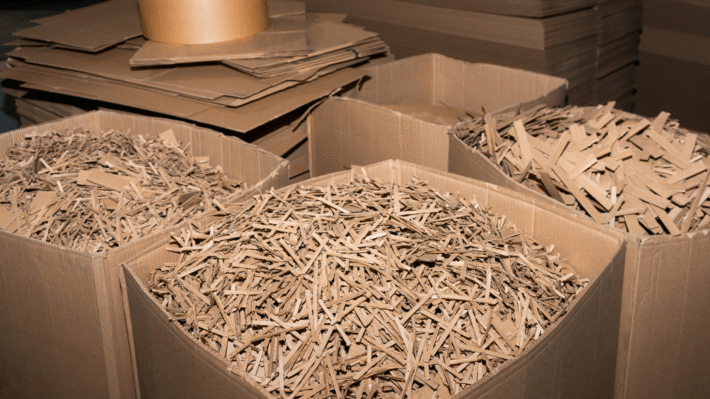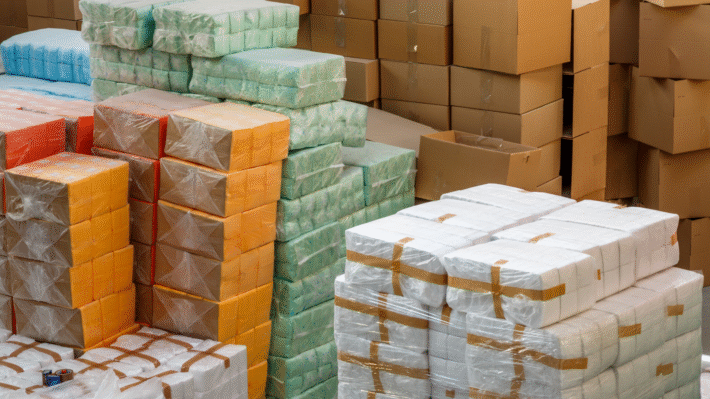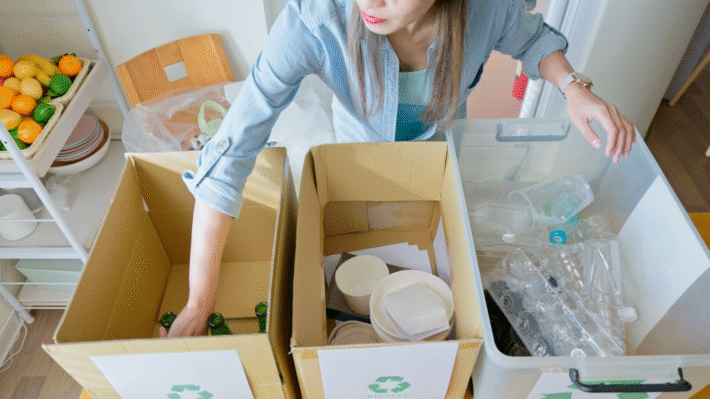Circular Economy Keeping Resources in Use for a Sustainable Future

Imagine a world where waste is a thing of the past and resources are reused over and over! Welcome to the fascinating concept of the Circular Economy, where the goal is to keep resources in use for as long as possible. In this treasure-hunting adventure, we dive into a closed-loop system that promises to reshape our habits, boost sustainability, and significantly reduce waste.
Curious about how this magical system works? We’ll explore why smart businesses, dedicated governments, and passionate individuals are embracing this eco-friendly idea. Learn how you too can be a part of this exciting journey and help the planet thrive. The Circular Economy is not just an idea but a movement that brings hope for a cleaner and brighter future. Let’s discover how!
Understanding the Circular Economy
The Circular Economy is an exciting and clever idea. Imagine a world where nothing is wasted, and everything is reused. That is what this system is about. It helps keep our planet green and uses our stuff in smart ways.
Basic Principles of a Closed-Loop System
In a Closed-Loop System, we try to keep resources in use for as long as we can. It’s like a big cycle where things are used, recycled, and reused again.
What are Resources?
Resources are things we need and use every day. They can be natural like water, trees, and minerals. Resources are also the things we make like plastic bottles, cars, and clothes. These resources are used to make all the things we have and use in our daily lives.
When we talk about keeping resources in use, it means we want to use these things without throwing them away quickly.
The Importance of Keeping Resources in Use
Keeping resources in use is super important. Why? Because when we throw things away, they end up in a landfill and create waste. Waste makes our planet dirty and uses up more resources. But if we keep resources in use, we reduce waste!
Fun Fact: Recycling one aluminum can saves enough energy to run a TV for three hours! Learn more about recycling.
When we focus on keeping resources, we help the Earth and make sure we have enough things for the future!
Differences Between Linear and Circular Economies
The difference between a Linear Economy and a Circular Economy is like the difference between a straight line and a circle. One goes from start to finish, and the other goes round and round.
The Traditional Linear Economy
A Traditional Linear Economy is like a one-way street. You make something, use it, and then toss it away. It’s like buying a new toy, playing with it, and then throwing it into the trash when you are bored. This way creates a lot of waste and uses resources fast.
Did you know that in a linear economy, about 90% of plastics are never recycled? They just pile up, creating more rubbish.
Transitioning to a Circular Economy
Transitioning to a Circular Economy is a smart move. It’s like turning that one-way street into a roundabout. In a circular economy, we think before buying, make things that last, and fix or recycle them when they break.
This way, we use less and save our planet by keeping resources in use for a long time. It’s better for the Earth and for us!
By moving to a circular system, we save resources, cut down on waste, and make our world cleaner and greener! Find out how you can help.
In summary, the Circular Economy is about being smart and using what we have wisely. It’s a win-win for everyone!
Core Elements of the Circular Economy
The core elements of a circular economy are like the beating heart of this amazing system that keeps resources useful, instead of wasting them. Let’s dive into the important parts that make a circular economy work.
Recycling: A Key Component
Recycling is like a superhero in the circular economy world. It’s all about giving old things a new life and keeping them out of the trash.
How Recycling Works in Nature
Nature has been recycling for millions of years. Think about leaves falling from trees. When they hit the ground, they break down and become part of the soil. This process is recycling at its finest. The broken-down leaves make the soil rich and strong, which helps new plants grow [source]. In a similar way, composting at home works by turning food scraps into nutrient-packed soil for gardens.
Why Recycling Matters
Recycling is crucial because it helps the planet in big ways. When we recycle, less trash piles up in landfills, which means less pollution. It also saves energy because making new items from recycled materials uses less power than making them from scratch. Recycling is also like a treasure hunt. It keeps our environment neat and saves resources like trees, water, and other raw materials [source].
Resource Efficiency
Resource efficiency is like being super-smart with what we have. It’s about using our resources, in the best way possible, so there is less waste.
Maximizing Resource Use
To maximize resource use, we need to make the most out of everything we have. This means using all parts of a resource, whether it’s food, water, or energy, before we think about throwing it away. For example, using vegetable peels to make a vegetable broth is a smart way to get more goodness from what we might usually toss out. This kind of thinking helps us save money and helps the earth by using fewer resources [source].
Reducing Waste
Reducing waste is about finding ways to have less trash going to the landfill. It starts with being smart about the things we buy and always thinking, “Do I really need this?” One good idea is to look for products that have less packaging. Another is to donate items like clothes that we no longer use. Every time we reduce waste, we’re giving back to the planet and keeping things useful for as long as possible [source].
Each part of the circular economy is important to keeping resources in use. Recycling, resource efficiency, and waste-reduction all work together to make the world a better place.
Benefits of Embracing a Circular Economy
The circular economy is a fancy term for a smarter way to use our stuff. Let’s jump in and see why it’s so amazing!
Environmental Advantages
A circular economy is Earth’s best friend. It helps us take good care of our planet by making some smart moves.
Reducing Pollution
Pollution is like a bad dream. It makes our air, water, and land sick. But wait! The circular economy can fight it! How? By being kind to our resources. Instead of throwing them away willy-nilly, we reuse and recycle them. This means less need to make new things and less pollution. Places like Amsterdam are already shining examples of how to tackle pollution with a circular approach. Check this out Amsterdam Circular.
Conserving Natural Resources
Think of natural resources like a sandbox. If we keep digging without filling it back, it will run empty. In a circular economy, we save resources by keeping them in the loop. That means we don’t waste what Mom Earth offers us. A cool example is how Finland uses circular economy ideas to craft pulp and paper, conserving water and trees. See their magic here Finnish Pulp & Paper.
Economic Benefits
Now, let’s talk money. The circular economy isn’t just about saving trees and rivers. It’s about bringing some good fortune too.
Boosting Local Economies
Local economies are like family gardens. The more we plant and tend them, the better they grow. With the circular economy, businesses and local markets can thrive. When we buy locally and use resources smartly, communities grow stronger. A winning example is how Glasgow is cultivating its own circular economy by supporting local businesses. Want to know more? Go here Circular Glasgow.
Creating New Jobs
Hunting for new jobs? Look no further! The circular economy is a treasure chest of job opportunities. It calls for a need for new services like recycling, repairing, and renting. These new gears in the system bring more jobs to towns and cities. The Ellen MacArthur Foundation reports on programs creating jobs linked to circular economy innovations. Check this Jobs Creation Report.
So there you have it! The circular economy is a win-win for the environment and the economy. Let’s keep our resources circling, our skies blue, and our communities thriving!
Implementing Circular Economy Practices
In today’s world, many people are excited about Circular Economy practices. These smart steps help us save resources, protect our planet, and even save money! Let’s dive deeper into how individuals and businesses can play their part.
Steps for Individuals
There are lots of easy ways for everyone to help the circular economy right from home! Small actions can make a big difference. Let’s explore!
Simple Changes at Home
Making simple changes at home is a great way to start. Recycling is one of the most important things. Instead of tossing everything in the trash, separate your paper, plastic, and metal. By doing this, these items can be reused instead of wasting them. Visit EPA recycling tips to learn more.
Another change is composting. Have you heard of it? Instead of throwing away banana peels or apple cores, turn them into rich soil for plants by composting. It’s like creating magic soil for your garden!
Plus, remember to avoid buying single-use plastics. Use a reusable water bottle or carry cloth bags to the store. Simple, right?
Community Involvement
Being part of community activities can be super fun and inspiring! Join local recycling drives or participate in clean-up events. Many towns have tree-planting days, too. Working together, we all help keep our planet healthy.
Another tip is to support local businesses that use sustainable products. They often care deeply about the planet and need your support to thrive. Buying from them encourages better choices worldwide.
Business Strategies
Businesses play a huge role in the Circular Economy. They can create big changes, and when they do, everybody wins! Let’s see how they can lead the way.
Designing for Durability
Businesses can design products that last longer. Instead of making items that break quickly, they can create things that endure. This means you won’t need replacements as often, which saves resources and money. Interesting, right?
Think about washing machines or cars. If they last longer, we don’t need new ones as often. That’s a smart step in the right direction.
Innovative Business Models
Innovation means being creative and trying new things. Businesses can adopt new models like renting instead of selling. This is like borrowing books from a library but for things like tools or toys.
There are also many ways to use materials that have been recycled, like turning old tires into playground surfaces! It’s about making something new out of what already exists—truly innovative!
In conclusion, both individuals and businesses can make a world of difference by diving into the Circular Economy. Let’s roll up our sleeves and get started today!
One comment
Comments are closed.




[…] Finite Resources mean that there is just so much of the stuff we use every day. Things like water, oil, and trees […]